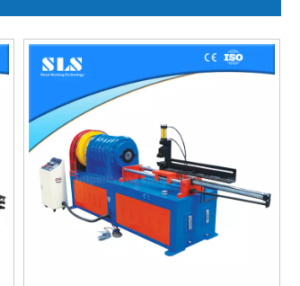In the realm of pipe bending, the evolution of technology has introduced a significant player: the electric pipe bending machine. This advancement promises to redefine efficiency, precision, and ease of use in pipe bending applications. But how does it stack up against traditional and other modern bending machines? Let’s delve into the specifics to understand the value it brings to the table.
Efficiency and Speed
Unmatched Speed
Electric pipe bending machines boast significantly faster bending speeds compared to manual or hydraulic counterparts. For instance, an electric machine can complete bends in a matter of seconds, which is crucial for high-volume production settings. The rapid speed does not compromise the quality of the bends, ensuring high productivity without sacrificing precision.
Energy Efficiency
In terms of energy consumption, electric models are more efficient. They only use power during the bending process and remain dormant otherwise, unlike hydraulic machines that need to keep their fluid under pressure continuously. This efficiency can lead to considerable energy savings, especially in large-scale operations.
Precision and Control
Superior Precision
The digital control system of an electric pipe bending machine allows for extremely precise bends. Operators can input exact bending angles and radii into the machine, achieving tolerances as tight as ±0.1 degrees. This level of precision is indispensable for industries where accuracy is non-negotiable, such as aerospace and automotive manufacturing.
Enhanced Control
The intuitive controls of electric bending machines offer a higher degree of precision and flexibility. Operators can easily adjust settings for different materials and thicknesses, ensuring optimal bending performance without the trial and error often associated with manual adjustments.
Cost-Effectiveness
Reduced Operating Costs
Electric pipe bending machines require less maintenance compared to hydraulic machines, as they lack hydraulic fluids and associated components that need regular servicing. This aspect, combined with their energy efficiency, results in lower operating costs over the machine’s lifespan.
Material Savings
The precision of electric bending machines translates to less waste and rework, further contributing to their cost-effectiveness. By producing accurate bends the first time, these machines minimize the need for additional material, thus saving costs associated with material wastage.
Versatility
Broad Material Compatibility
Electric pipe bending machines can handle a wide range of materials, from soft aluminum to tough stainless steel, without requiring any physical adjustments to the machine. This versatility makes them suitable for various industries, from plumbing and HVAC to automotive and aerospace.
Multiple Bending Capacities
With the ability to store multiple programs and settings, electric bending machines can easily switch between different bending operations, making them ideal for workshops that work on varied projects. This feature saves time and increases the machine’s utility across different tasks.
Conclusion
The advancement represented by the electric pipe bending machine offers compelling benefits in efficiency, precision, and cost-effectiveness. Its superior speed and precision, combined with lower operating costs and exceptional versatility, make it a valuable asset for any operation prioritizing quality and efficiency. As technology continues to advance, the role of electric bending machines in the industry is set to become even more significant, underscoring their value over traditional bending methods.
